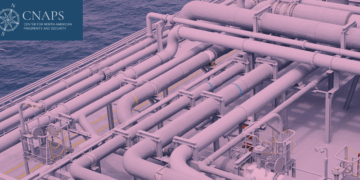This article was originally published by the Canadian Gas Association.
By Heather Exner-Pirot, January 17, 2024
Enbridge’s announcement in September that it was acquiring three U.S.-based utilities for USD$14 billion saw Canada’s largest energy company also become North America’s largest gas utility. The deal is significant not only on its own merits, but as part of a bigger trend: Canadian energy companies that are looking for growth prospects are finding them south of the border.
The trend is not new. In 2016, Canadian utilities went on an American shopping spree. Fortis acquired ITC for USD$11.3 billion; Ontario-based Algonquin Power & Utilities Corp acquired Missouri-based Empire District Electric Company for USD$2.4 billion; and Nova Scotia-based Emera acquired Florida-based TECO in a USD$10.4 billion deal.
Pipelines were in the mix too, with TC Energy acquiring Columbia Pipeline Group, a gas transmission network, that year for USD$13 billion.
In 2017, Hydro One purchased U.S. power supplier Avista for USD $3.4 billion, and AltaGas took over WGL Holdings (which supplies natural gas to the White House) for USD $4.6 billion. More recently, TriSummit acquired the Alaska gas distribution, transmission, and storage assets of SEMCO Energy for US$800 million in March.
As such, the Enbridge utility megadeal can be seen less as a harbinger and more of a culmination.
What is behind this Canadian appetite for American utilities and pipelines? At one level, it is a response to the inherent limitations of the Canadian utilities sector, which is heavily regulated and often provincially owned. Add in Ottawa’s torrent of climate policies aiming to cut growth in Canadian oil and gas, and pastures look greener elsewhere.
But it also speaks to the confidence the sector’s biggest players have in the long term prospects for natural gas. The Dominion deal adjusts Enbridge’s earnings from a 60-40 mix between crude oil & liquids, and natural gas & renewable energy respectively, to something closer to a 50-50 split. Enbridge, like many energy companies, is betting on natural gas being a bridge fuel in the energy transition rather than being phased out. And whatever fuel mix we use in the future, it will require pipelines and distribution, whether in the form of natural gas, renewable natural gas (RNG), hydrogen or otherwise.
Two phenomena are worth emphasizing here. The first is that the United States is seen as a jurisdiction for growth; Canada, not so much. Our biggest energy companies are expanding to the south, but the reverse is not true. Enbridge and TC Energy are leading the way, but Cenovus, Cameco, Hydro-Québec and others are also making moves, on top of the long list of utilities above.
This is not just anecdotal. According to the U.S. State Department,1 Canadian foreign direct investment (FDI) in the United States was about 26% higher than their reciprocal FDI in 2022, or USD$528 billion compared to their USD$406 billion. This is part of a broader trend that has been worsening since 2014. In that year, Canadian investment abroad was only about CAD$100 billion more than foreign investment in Canada. By 2022 the imbalance had grown to a whopping CAD$725 billion. Canadian companies are generating wealth; they are just generating a smaller proportion of it at home.
The second is that the Canadian and American energy markets are highly interdependent, and growing more so. In fact, 2022 saw record energy trade between our two countries, reaching USD$190 billion, almost triple what it was in the throes of the COVID-19 pandemic, and beating the last high water mark of USD$178 billion in 2008. From natural gas and liquids pipelines to refineries and electricity grids, fundamentally we have a single North American energy system.
As such, we should be developing and coordinating energy and climate policy much more closely. It is inefficient, not to mention painful for the energy sector, when Canada and the United States – and many provinces and states on top of that – propose substantially different standards, goals, and regulations. Energy is an area that needs closer policy collaboration and alignment between our two nations in order to achieve sustainability, reliability and affordability of supply.
This need is manifesting itself in a growing Canadian presence in the US capital. In the past year or so, TC Energy has established a policy team in Washington DC, and Cenovus and the Business Council of Canada have opened up offices there (as has my own think tank, the Macdonald-Laurier Institute). As entreaties to Ottawa fall on deaf ears, businesses are looking for reception elsewhere.
The Canadian energy sector is betting big on natural gas, be it through retail, pipeline transportation or LNG exports. Where possible, it’s betting on Canada too. But the United States and other markets are where growth is on offer.
We should all celebrate the success of Canadian companies abroad. But we should be creating a policy and business environment that allows them to grow in our own back yard too.
Heather Exner-Pirot is the Director of Energy, Natural Resources and Environment at the Macdonald-Laurier Institute.








